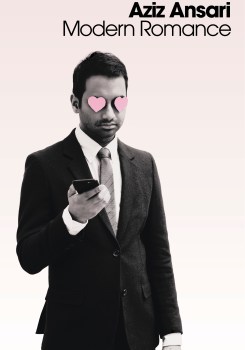Aziz Ansari on How to Date Better
An excerpt from “Modern Romance.”
The following is an excerpt from Modern Romance, by Aziz Ansari, with Eric Klinenberg.
The quality of dates is one thing, but what about the quantity? When thinking about that question, I recalled a change I made in my own personal dating policy at one point. While I was single in New York, the city of options, I found myself and a lot of my friends just exploring as many options as we could. There were a lot of first dates but not as many third dates. We were consistently choosing to meet as many people as possible instead of investing in a relationship. The goal was seemingly to meet someone who instantly swept us off our feet, but it just didn’t seem to be happening. I felt like I was never meeting people I really, really liked. Was everyone shitty? Or was I shitty? Maybe I was okay, but my dating strategy was shitty? Maybe I was kind of shitty and my dating strategy was kind of shitty, too?
At a certain point I decided to change my dating strategy as a personal experiment. I would invest more in people and spend more time with one person. Rather than go on four different dates, what if I went on four dates with one person?
If I went out with a girl, and the date felt like it was a six, normally I wouldn’t have gone on a second date. Instead, I would have been on my phone texting other options, trying to find that elusive first date that would be a nine or a ten. With this new mentality, I would go on a second date. What I found is that a first date that was a six was usually an eight on the second date. I knew the person better and we kept building a good rapport together. We’d develop more inside jokes and just generally get along better, because we were familiar.
Just casually dating many people had rarely led to this kind of discovery. In the past I had probably been eliminating folks who could have possibly provided fruitful relationships, short- or long-term, if I’d just given them more of a chance. Unlike my enlightened friend in Monroe, I just hadn’t had enough faith in people.
Now I felt much better. Instead of trying to date so many different people and getting stressed out with texting games and the like, I was really getting to know a few people and having a better time for it.
After doing the research for this book and spending time reading papers with long-ass titles like “Couples’ Shared Participation in Novel and Arousing Activities and Experienced Relationship Quality,” I realized the results of my personal experiment were quite predictable.

Initially, we were attracted to people by their physical appearance and traits we can quickly recognize. But the things that really make us fall for someone are their deeper, more unique qualities, and usually those only come out during sustained interactions.
In a fascinating study published in the Journal of Personality and Social Psychology, University of Texas psychologists Paul Eastwick and Lucy Hunt show that in more dating contexts, a person’s “mate value” matters less than their “unique value.”
The authors explain that they define “mate value” as the average first impression of how attractive someone is, based largely on things like looks, charisma, and professional success, and “unique value” as the extent to which someone rates a specific person above or below that average first impression. For instance, they explain the unique value of a man they call Neil like this: “Even if Neil is a 6 on average, certain women may vary in their impressions of him. Amanda fails to be charmed by his obscure literary references and thinks he is a 3. Yet Eileen thinks he is a 9; she finds his allusions captivating.” In most cases, people’s unique traits and values are difficult to recognize, let alone appreciate, in an initial encounter. There are just too many things going through our minds to fully take in what makes that other person special and interesting. People’s deeper and more distinctive traits emerge gradually through shared experiences and intimate encounters, the kinds we sometimes have when we give relationships a chance to develop but not when we serially first date.
No wonder that, as Eastwick and Hunt report, “Most people do not initiate romantic relationships immediately after forming first impressions of each other” but instead do it gradually, when an unexpected or perhaps long-awaited spark transforms a friendship or acquaintance into something sexual and serious. According to one recent study, only 6 percent of adolescents in romantic relationships say that they got together soon after meeting. The number is surely much higher among adults, especially now that online dating is so prevalent, but even people who meet through Tinder or OkCupid are much more likely to turn a random first date into a meaningful relationship if they follow the advice of our Monroe friend Jimmy: There’s something uniquely valuable in everyone, and we’ll be much happier and better off if we invest the time and energy it takes to find it.
But seriously, if the person doesn’t clop their toenails or wear clean socks, look elsewhere.
There are plenty of options.
From Modern Romance, by Aziz Ansari, with Eric Klinenberg. To be published on June 16, 2015 by The Penguin Press, an imprint of Penguin Publishing Group, a division of Penguin Random House LLC. Copyright © 2015 by Modern Romantics Corporation.